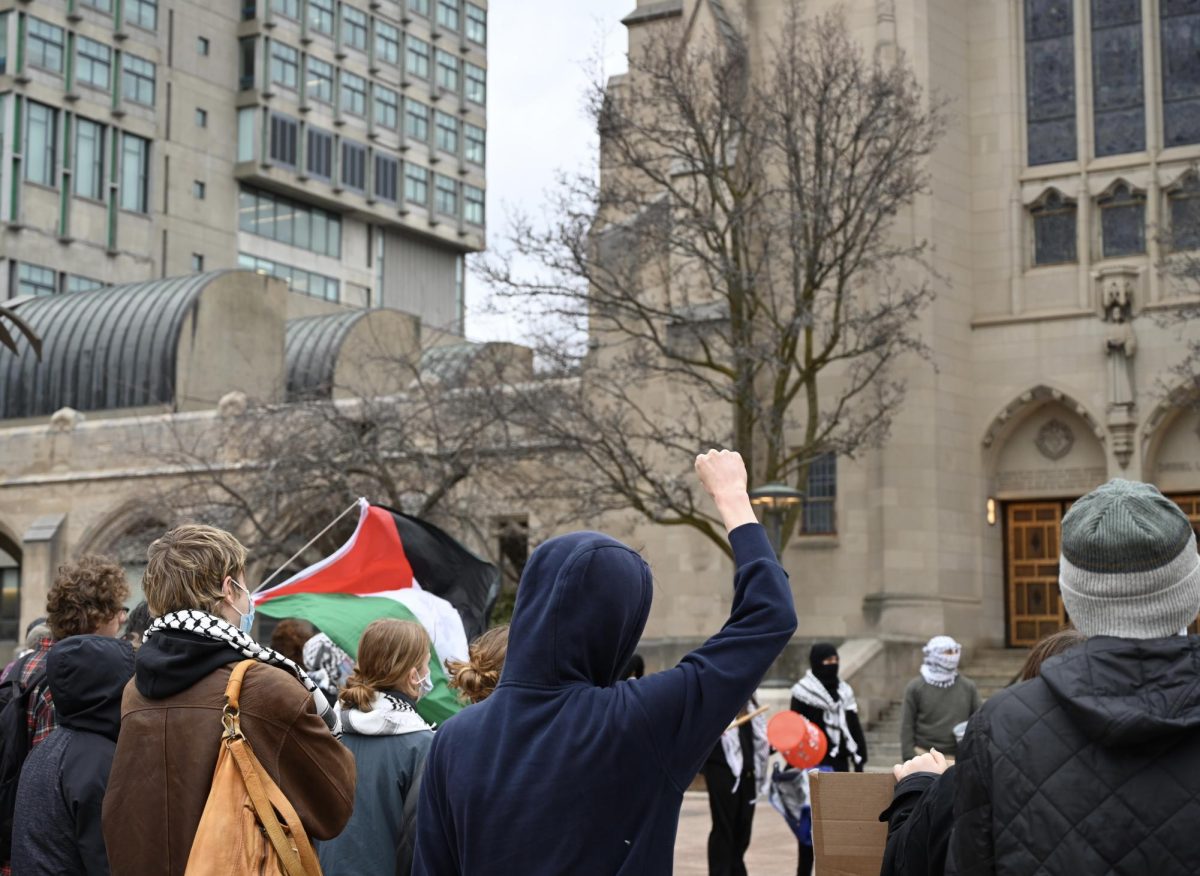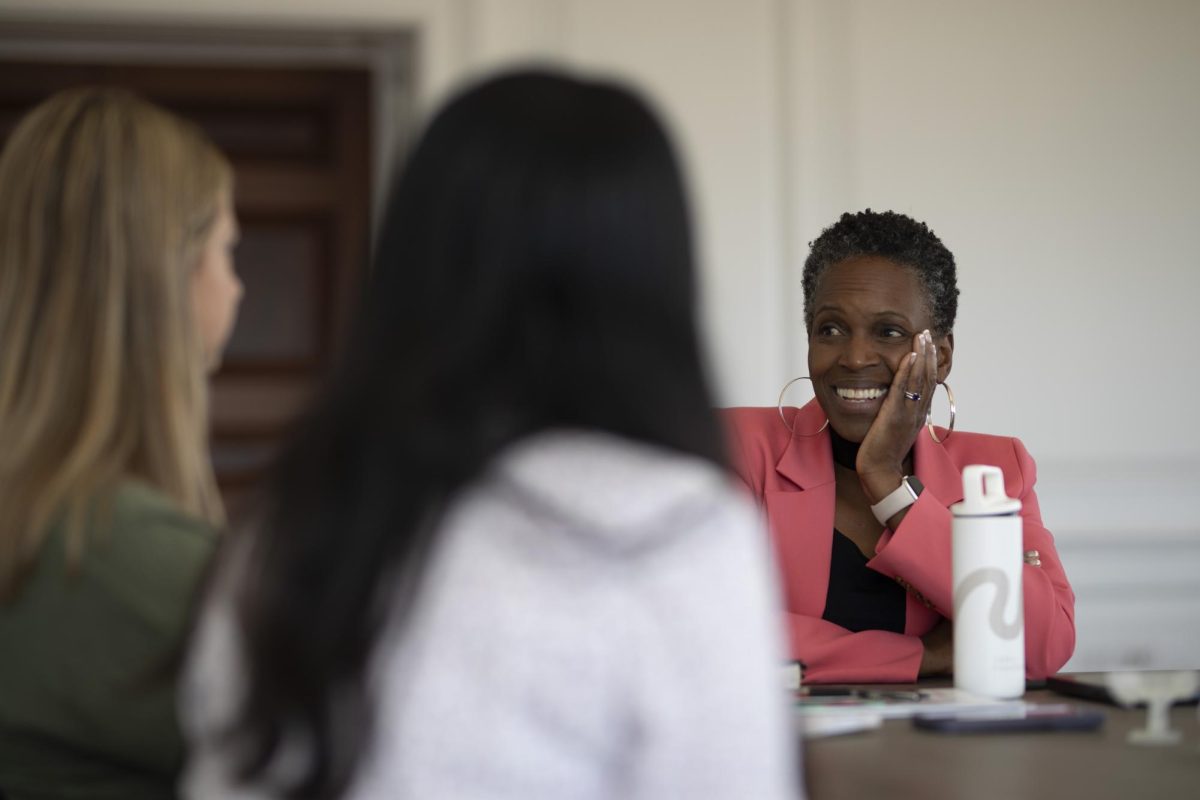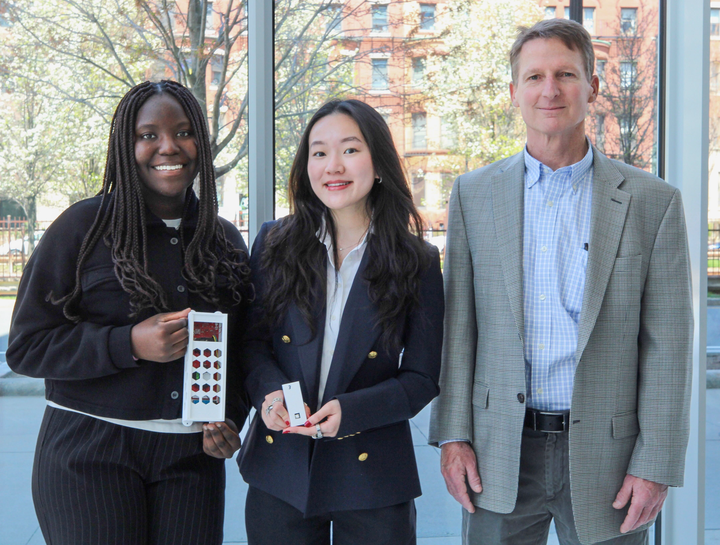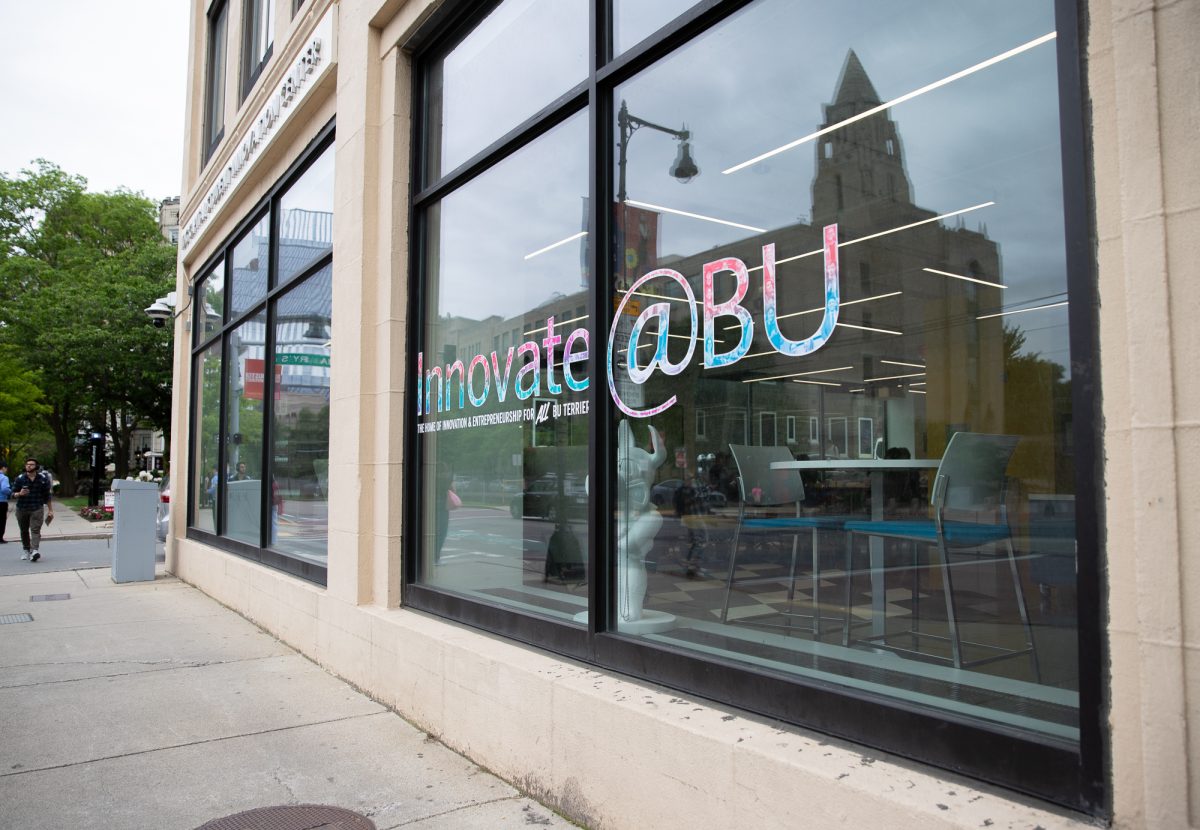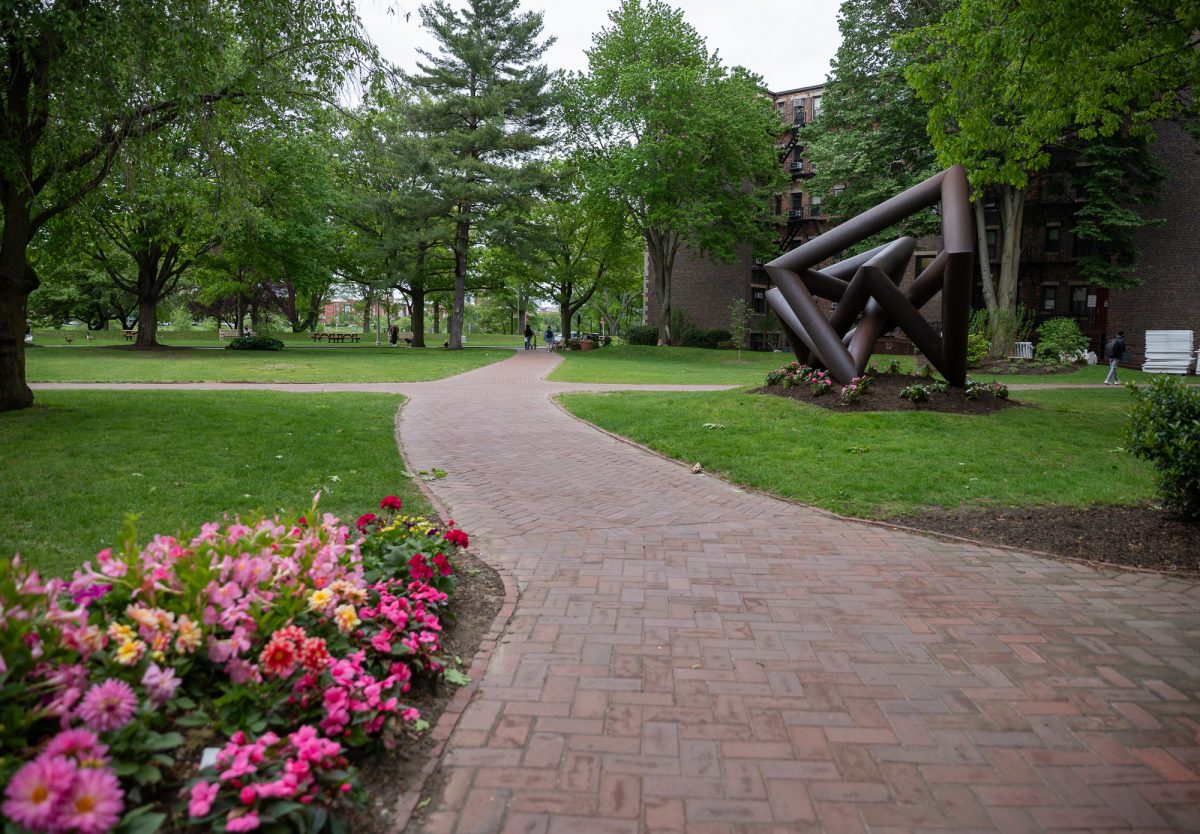By Joanne Kelleher
The days of sit-ins, building takeovers and race riots are over. The smoke has cleared and an uneasy silence hangs over Boston University.
According to David Gudenhurst, director of Financial Aid, after the social upheaval of 1968 and 1969 there were demands for increased numbers of black students at BU.
Arland Christ-Janer, president at the time, bowed to the pressure and agreed to find 100 black students.
At this time, there were, said Gudenhurst, “two groups on campus. One preferred to attract quality students and the other wanted to accept those blacks who could not get admitted anywhere else.”
The first method eventually won out when the administration decided that it wasn’t doing any good to accept unqualified students, said Gudenhurst.
“The first year,” he continued, “was costly. There were special tutorial and summer programs, meant to assist minority students with reading skills and other rough spots often overlooked in ghetto schools. However, money for this program came from scholarship funds, which meant that there was less money for students seeking aid. The summer program was dismantled this year.”
Also falling under the hatchet this year was the budget for the Martin Luther King Jr. Afro-American Center. The Center’s funds were reduced by about $25,000, a shrinkage of almost 20 percent.
And yet, according to Dr. Edwin Penn, special assistant to President John R. Silber, there is not nearly as much racial friction at BU today as there was two years ago.
He attributes this improvement to University services as well as the placing of more black resident assistants (RA’s) in the dorms and BU’s tradition of being “up front” in the civil rights movement. “BU,” he said, “has done a lot for blacks.”
Penn also gives some credit to the hushing of strident black voices. “The previous administration of the King Center,” he said, “pursued an outright segregationalist policy. And the previous University administration was inclined to give in to any demands, without really understanding the implications of either the demands or the giving in.”
Rev. Floyd Flake, director of the King Center, sees the situation differently. “I don’t think any university has done a good job,” he said. “Most universities got greedy for the money the government was giving out for bringing in blacks. They went out and hired themselves some black faces, people who were dissimilar to the students and who had no capacity to deal with the problems these students have. People in these positions are still more interested in their academic position. Many had misconceptions about what they were supposed to be.”
“This,” said Flake, “is what we are still trying to undo.” The ways in which he and other black campus leaders are attempting to accomplish this rectification include pushing for the hiring of black administrators, who are qualified for the position by more than their race and breaking down the misconception that “these are special students, who are getting special money.”
Out of a total 113 administration personnel at BU, 6 percent or 7 people are members of minority groups.
There are unique pressures brought to bear on blacks in administrative positions. This fact is attested to by a statement by Ken Edison, research coordinator at the King Center. Edison said, “If I were older, I wouldn’t want to work in this situation.”
“It is a 24 hour job,” said Edison. Black students look for a model. In a black school, there would be more black administrators to spread it around. You are not allowed any gut reactions. You find yourself,” he said, “being counselor and teacher and then you have to deal with the reaction of white administrators to you.”
This last factor can loom as a large obstacle psychologically as well as practically, according to Flake. He speaks with restrained bitterness of fellow administrators, who will praise his presentation at a meeting and later walk by him on the street with averted eyes. “It is not just blacks,” he said, “who are moving off to themselves, but whites as well.”
“Everybody,” continued Flake, “wants all of us to appear to be alike. Just as you are different, we are different. You want to be able to designate who is the spokesman for the blacks. That’s a lot of crap. It is unrealistic.”
Flake, who complains that every incident involving a black, no matter how trivial, prompts a call to him, is tired. “Tired to being the deputy for the colored.”
“We have reached a point,” added Edison, “where it is not as fashionable to go to a white school to work. And if you do, you are on a constant tightrope.” Edison questions whether there are many blacks who would want to come to a campus like BU. It is his goal to eventually work in a black school.
It is these schools and not at places like BU, according to Flake, that the country’s black leaders are being formed.
“As much as it is played down,” he said, “most of the black people who are in high places come from black schools.”
Although the facilities in these schools cannot compare with those at BU, the results are much better, he said, because the expectancy levels of black professors toward black students are radically different.
Due to false assumptions about the intellectual capacity of blacks, white instructors often cheat these students out of an education. “They expect very little,” said Flake, “and will get very little.”
As a result, back graduates who are not qualified emerge from universities and cannot meet the expectations that they did not face in school. Flake called this phenomenon “racism in reverse.”
Fifteen out of 388 full professors, 12 out of 329 associate professors, 24 out of 430 assistant professors, 2 out of 136 instructors and 40 out of 522 lecturers at BU are members of minorities. These figures represent Orientals, Spanish-speaking people and America Indians as well as blacks.
The Black Educators Workshop is a University-wide organization of black students interested in education.
One of the major aims of the group is the circumvention of rigid bureaucratic barriers which close black graduates out of the Boston educational system.
Boston currently holds the worst record of any US city in the hiring of black teachers. There is now one black teacher for every 81 black students. The national average is one to 36.
Dean Marvin Scott, director of Instructional Services at SED, places part of the blame with institutions like BU. He reports that only recently has BU exhibited any interest in black teacher placement. “What can one expect,” asked Scott, “if out of 105 faculty members there are only 3 black professors?”
Scott does not condemn his colleagues for their lack of emphasis on inner city problems but chalks the situation up to the natural tendency of institutions to cater “to the cash-paying clientele.”
Nevertheless, those black students from BU, who do not return to out-of-state homes upon graduation are, he said, “left to tough it out” by themselves.
Dr. Robert Freyermuth, director of Curriculum and Instruction, expresses the opinion that the imbalance could be alleviated only by centering on more student recruiting in the Boston black community. “However,” he said, “a private university, if it is to survive, must recruit all over.”
Dean Deniston of Metropolitan College, formerly of the Placement Office and Mrs. Elsie Stone currently employed in that office, concur, however, that only a handful of black undergraduate students are interested in teaching.
Vicki Grant, former secretary of the Black Educator’s Workshop disagrees. The Workshop’s membership of 75 includes black undergraduates from all schools of BU and represents only a portion of the students interested in education, she maintains.
She does agree, however, that an attempt should be made to recruit more heavily from among the Boston blacks. “one of the reasons for the existence of the Workshop,” she said, “is that we found the orientation SED was toward suburban, middle-class schools. It didn’t prepare back students for dealing with black lower-class children in the cities.”
The workshop functions as a research group to acquire the information that black students need to deal with the problems of teaching in urban schools.
Grant credited SED with taking steps toward dealing with the problem. However, she tells of the damage that can be inflicted on a black child by well-meaning white teachers, who emerge from universities with no knowledge of black culture or history. And no such courses are yet offered or required at SED. “But then,” she said, “most of the students will be going to middle-class, suburban schools with no blacks, anyway.”
There are varying estimates of the black student population at BU. The figure hovers in the area of 1,200.
According to Gudenhurst’s estimates, 75 percent of these students receive some form of financial aid. Scholarship funds totalling $3.6 million are divided between white and black applicants.
Taking a cold, realistic view of the situation, Edison said that BU is a business like any other business. “The question,” he said, “is neither black nor white, just money. So if these students cannot pay their way, then the university cannot afford to continue paying for them.”
Flake’s assertion that the King Center and organizations like it will die out in seven to 10 years, “as blacks become more a part of universities and what they are about,” seems utopian in contrast.
The hope seems rather groundless on the basis of his own statements. The BU Medical Center managed to recruit only nine blacks last year out of about 200 new entrants. This fact prompted Flake to say that “the Medical Center has not progressed too much since Dr. Fuller was there.” Dr. Solomon Carter Fuller is an illustrious black graduate from the class of 1897.
The King Center is just one part of a network of service, cultural and social organizations existing on campus for black students.
“The throwing up of centers like the King Center came,” said Edison, “as a response to fear guilt and sympathy after the black riots of 1968. He compares them to the land-grant colleges set up after the Civil War for the vocational training of blacks.
The rioting has stopped but the Center’s budget has been cut, there may not be funds available to spur increased black enrollment and there is definitely what could be called a “racial situation” at BU.
Underlying all of these areas of difficulty is a failing common to both black and white, an inability to communicate.
The divisions in opinion and differences in perception are not neatly divided along black-white lines. A thousand people perceive the situation in a thousand different ways.
Thus, a comment from Denise Nelken, white and a junior in Sargent that “we are all one big happy family because we’ve all learned to live together,” is interrupted by a jarringly contradictory comment from another white dorm member.
“I don’t know,” says Howard Smith, a sophomore in MED, “but that we have to be one of the most divided families I’ve ever been part of.”
Thus, for Gregory Powell, black and a junior in CBA, “black fraternities only divide the black community, and it’s small enough to start with.”
While for Patricia Hunt, president of black sorority Delta Sigma Theta, such an attitude indicates only that “a person has a problem before he starts out.”
And for David Anderson, white student in SPC, “That these are black organizations at all indicates that racism exists.”
Thus, Jane Pearson, a white sophomore in CLA, can say, “In all of the time I’ve spent here, I haven’t made real contact with any black kids or learned anything about their organizations.”
And Vicki Grant, black senior in CLA and member of Black Educator’s workshop, comments, “I would rather not have black events covered at all than to have them covered by a campus newspaper. We have Watu Wazuri and I’m really wary of distortion.”
Some way must be found to establish real channels of communication between blacks and whites at all levels. If this is not done, BU may find itself retreating silently past years of progress, toward a standard of “separate but equal.”






